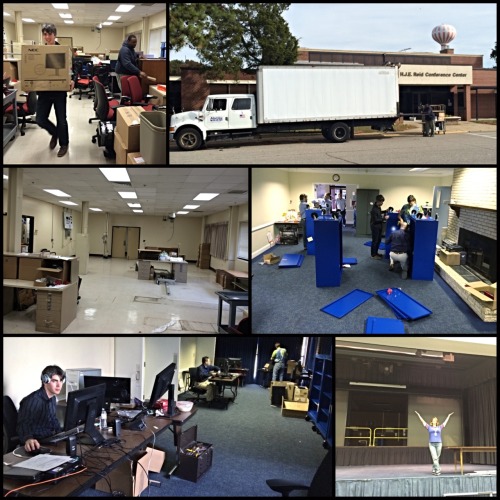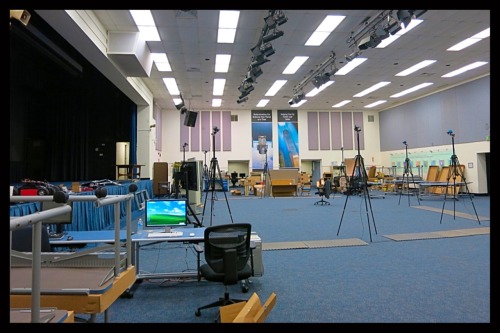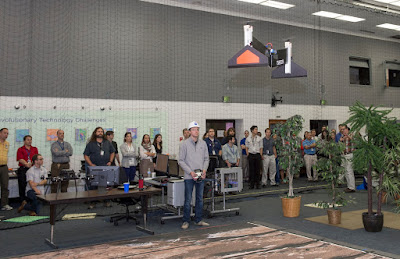DEEGAN
What did you do this semester?
For my internship I was a computer vision intern in the Autonomy Incubator. My main project was to develop an object detection and classification solution to be utilized onboard a UAV. This entailed researching the state of the art in the field, developing an application based on this research, and then implementing it onboard a vehicle to test. The biggest accomplishment over the course of the internship was being able to run a full flight test of the detection and classification with a UAV. Over the course of the internship I learned many things. The biggest thing I learned was about the state of the art in convolutional neural networks as well as object segmentation approaches with point clouds. Secondly, I learned about the Agile methodology and how to work in a fast pace environment. Third I learned about the challenges still facing UAV’s and what research needs to be completed in the future to create autonomous vehicles. One of the best aspects about this internship was the freedom to develop my own solution for the project and own what I was working on. This allowed me to fully engage in the project and learn a great deal. Furthermore, it has inspired me to pursue graduate school in the field upon completion of my undergraduate degree. As a result of my project, I have been able to present the work twice at the Autonomy Incubator showcase to the Langley community. In addition, my mentor will present my work at the Aviation 2016 conference and we hope to submit a paper to a computer vision or robotics conference. In addition to a great project I have been able to learn about the NASA community as a whole and the many endeavors here at Langley as well as participate in outreach events to further enhance my experience.
As the internship ends, what are your next steps?
I will be returning to Purdue for the Spring semester where I will be in my Junior year. I will be rejoining the CAM2 (Continuous Analysis of Many CAMeras) research team that I am a member as well as rejoining an EPICS (Engineering Projects in Community Service) team that works on accessible classroom technologies for the Indiana School for the Blind and Visually Impaired.
What did you do this semester?
Coming into the internship, my mentor, Dr. Danette Allen, instructed me to update the blog, tweet, and manage video and photo equipment. From this framework, I developed the following objectives: produce summaries of the Autonomy Incubator’s actives that were interesting and accessible for the average American, increase exposure for the Autonomy Incubator by establishing a robust social media presence across platforms, and to maximize audience interaction with human interest, visual content and trending topics.
To accomplish these objectives, I created and worked on a variety of projects. I began a photo series called #MeetOurTeam, consisting of human interest photographs overlaid with brief text, which introduced social media audiences to the unique individuals behind the Autonomy Incubator team. I created an Instagram for the team, developed a Facebook page which is pending review, and worked with an intern in the CIO’s office to develop a NASA Langley webpage for the Autonomy Incubator team. For public relations outreach, I worked with the graphics department to develop a slide publicizing our monthly showcase, I created Autonomy Incubator lapel pins for the team, mini fliers with our social media information for guests and interested parties, and I transitioned the social media content to conform with NASA Style Guide standards.
Other milestones of my internship include the lobby video I developed that plays for guests of our building and is also shown at expos and during demonstrations at NASA. The content I created for social media posts received record setting impressions and engagements with our audience, and dramatically increased our followers in the tech field (overall audience increase of over 35%). The largest project I worked on was the Mars Flyer Video, which involved working with a variety of groups on site.
I learned a great deal during my internship, most notably within the realms of project management, social media marketing, and photo and video editing software. It was a privilege to work with the amazing people at NASA, and the opportunities to participate in outreach events and to organize tours for my peers were invaluable insights into life at Langley Research Center.
As the internship ends, what are your next steps?
As of tomorrow, I will be traveling around Europe for a month collecting videos, photos and interviews for my travel website lueurtravel.com. When I return home, I will continue to take online and open source courses in engineering, coding and science, as I am considering pursuing a second degree in aerospace engineering.



































